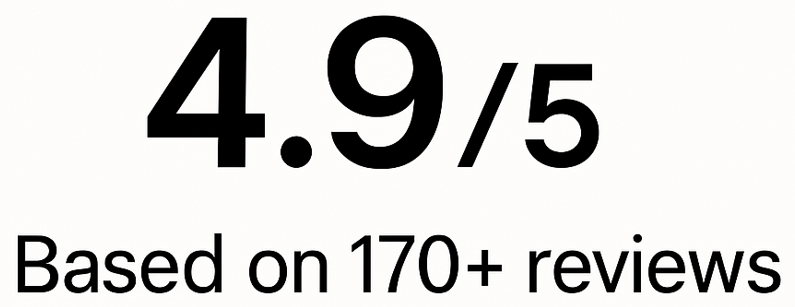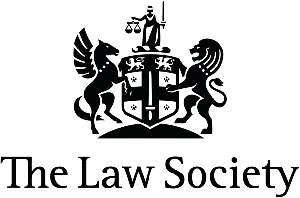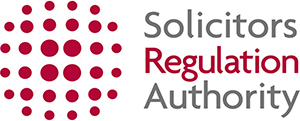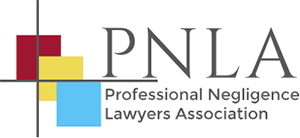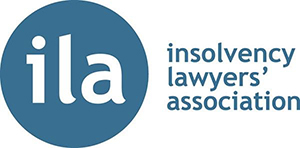Importance of Causation in Professional Negligence claims
Problem: In Finnan v Charles Russell Speechlys LLP [2023] EWHC 3058 (Ch), Stephen Finnan, a retired professional footballer and businessman, alleged professional negligence against his former solicitors. Finnan claimed that his solicitors, Charles Russell Speechlys advised him to commence unnecessary legal proceedings under Section 994 of the Companies Act 2006 against his brother, leading to significant financial losses. He contended that the solicitors’ advice resulted in a loss of over £6 million, including the director’s loans to companies and the value of his shares, legal costs, and additional financial burdens.
Outcome: A few weeks ago, the High Court in London struck out Finnan’s professional negligence claim against his former solicitors. The court concluded that Finnan’s allegations of professional negligence against his solicitors failed to present a coherent case, the pleaded case on causation was defective and he was not materially affected by any of the alleged negligence complaints.
The Court judgment focused on the lack of clear causation linking the solicitors’ alleged professional negligence to Finnan’s financial losses. The decision underlines the vital importance of establishing a direct causal relationship in professional negligence claims against solicitors and other advisers, and pleading a counterfactual i.e. what would have happened had proper advice been given.
Professional Negligence Claim against Solicitors
Professional negligence, when it involves solicitors and lawyers, refers to a breach of the duty of care that all legal professionals owe to their clients. This can occur when a solicitor or lawyer fails to perform to the standards expected of a reasonably competent professional in the legal field, resulting in harm or loss to their client.
To be successful with your professional negligence claim, you will need to prove that you can meet the professional negligence “test” as follows:
- Duty of Care – a duty of care is typically evidenced by the written retainer or instruction letter between the professional and client but in the absence of a written agreement it may be implied by the parties’ conduct.
- Standard of Care – Establish the standard of care expected from the professional in their specific field. This involves comparing their actions to what a reasonable and competent professional would have done under similar circumstances.
- Breach of Duty – you will need to demonstrate that the service provided by the professional fell below the standards of a reasonably competent professional. The professional is judged by the standard of care of a reasonably competent person in the area in which they hold themselves out as having expertise.
- Causation/Loss – you will also have to prove that you have suffered loss caused by an error, mistake or bad service from the professional.
- Damages – Provide evidence of the actual losses or harm you experienced as a result of the professional’s breach. This can include financial losses, emotional distress, or other damages.
The relevant test is whether “but for” the professional’s error, mistake or bad service would the loss have still occurred anyway? A claim will not succeed if you would have acted in the same way regardless of whether the professional had been negligent or not. All these elements must be proved to succeed in a professional negligence claim against a lawyer.
If you have suffered professional negligence from the negligent acts of a solicitor or legal adviser, please call us today for a Free Consultation on 0207 459 4037.
The Case of Finnan v Charles Russell Speechlys LLP
Background
Stephen Finnan brought a professional negligence claim against his former solicitors. The professional negligence claim against CRS for the alleged negligent handling of a business dispute Finnan had with his brother, Sean Finnan.
The underlying dispute involved several property holding companies – Wimbledon Developments Limited, Finnan Developments Limited, and Finnan Land & Property Limited – through which the Finnan brothers managed property development ventures in South-West London.
It was alleged that Sean had mismanaged investment money paid by Steve Finnan for the business ventures by way of a loan. Accordingly, Steve Finnan sought to recover almost £4m that he advanced to the businesses and wanted to exit the businesses.
Ultimately the brothers could not settle the dispute, and Steve Finnan commenced two petitions under section 994 of the Companies Act 2006 for unfair prejudice. However, during those proceedings, Sean sold 3 properties with a combined value of around £1.3m.
The brothers were able to agree on terms where the shareholdings in the companies would be transferred to Steve Finnan and a payment of £4m would be paid by Sean over instalments. However, although the shares were transferred, Sean failed to pay the settlement monies and a bankruptcy order was made against Sean.
Issues in the Negligence Claim
The crux of Finnan’s negligence claim was that CRS should not have advised him to pursue the unfair prejudice petition. Finnan alleged that CRS’s advice resulted in him engaging in costly legal proceedings and ultimately a settlement that was less favourable than what could have been achieved.
He claimed losses exceeding £6 million, including the value of his shares in the companies, repaid directors’ loans, legal costs, and additional financial burdens.
Decision
The High Court, presided over by Master McQuail, struck out Finnan’s claim. The court found that the particulars of the claim did not establish a coherent case of negligence, especially regarding the causation aspect.
Master McQuail noted that the claimant’s allegations lacked the necessary detail to form a clear counterfactual scenario showing how Finnan would have been in a better position without the alleged negligence. This decision was grounded in principles of causation and the necessity for claimants to articulate a clear and plausible alternative scenario that demonstrates a direct link between the solicitor’s actions and their losses.
Master McQuail noted, “The claimant’s presently pleaded case…fails to set out what the claimant says that he should have been advised by CRS or what CRS should have done or what the claimant says would have happened as a result.”
On the issue of causation, the judgment stated, “Absent causation of loss the claimant’s cause of action in tort is incomplete…the claimant cannot say he would in the end have arrived at a different financial outcome.”
It seems that the way that the claimant had pleaded his professional negligence claim was a professional claim that was always bound to fail. There was no adequate pleading on causation and no counterfactual pleaded.
The claimant could have obtained a freezing injunction or protection to avoid his brother selling three properties, and security could have been obtained in relation to those properties as part of the settlement agreement. It is not clear whether this is an issue that was dealt with. However, this does not appear to have been a pleaded issue in the professional negligence claim in any event, and ultimately the Court came to the right conclusion given the failure to properly plead causation and any counterfactual.
Causation in Professional Negligence Claims against Solicitors and Lawyers
In professional negligence claims specifically against solicitors and lawyers, establishing causation is a pivotal aspect of a successful claim. As explained above, causation refers to proving a direct link between the professional’s negligence and the client’s loss or harm. The claimant pursuing a professional negligence claim must demonstrate:
- Direct Link: The claimant must show that the loss or harm suffered was a direct result of the solicitor’s or lawyer’s negligent act or omission. This means that the loss would not have occurred if the solicitor or lawyer had acted competently.
- Foreseeability and Proximity: The loss must have been a foreseeable consequence of the negligence, and there should be proximity, meaning a close and direct relationship between the negligent act and the harm suffered.
- ‘But-For’ Test: This test asks whether the harm would have occurred ‘but for’ the solicitor’s or lawyer’s negligence. Often this is called the counterfactual, if the claimant had received proper advice X would have happened but instead given the negligence Y happened. If the harm would not have occurred without the negligent act, causation is established.
- Break in the Chain of Causation: The solicitor or lawyer can argue that there was an intervening act or event that breaks the causal link between their negligence and the claimant’s loss. For example, a solicitor fails to file a document on time, but the client’s case is later dismissed by the Court for an unrelated reason, such as a crucial witness retracting their statement. This unforeseen development could be seen as breaking the causal link between the solicitor’s negligence and the client’s ultimate loss. It is up to the claimant to demonstrate that such a break in the chain of causation does not exist.
- Quantifiable Loss: The claimant must not only establish that the solicitor’s or lawyer’s actions caused harm but also that this harm resulted in a quantifiable loss. This could be financial, such as lost compensation in a legal matter, or other measurable damages.
Proving causation can be complex, especially in legal matters where the outcomes are influenced by a multitude of factors. Claimants pursuing a professional negligence claim against their solicitor or lawyer should seek the expertise of professional negligence solicitors. Our professional negligence lawyers can often act on a fixed fee or offer a ‘no win no fee’ arrangement to pursue your negligence claim.
Case Example – Successful Professional Negligence Claim
Our no win no fee professional negligence lawyers acted for a construction company that purchased the freehold of a property located in London. However, the conveyancing solicitors acting in the property purchase failed to properly alert our client and advise that there were restrictive covenants which significantly affected the freehold reversion value of the property.
Our professional negligence lawyers were instructed by the construction client and successfully settled the professional claim against the conveyancers during the pre-action phase as the insurer’s solicitors sensibly admitted liability early without court proceedings having to be issued by the client.
The claimant client left the following feedback for our lawyers:
“Very satisfied with the way that Karim and his team took hold of a messy conveyancing professional negligence claim, and progressed it through to an amicable settlement in just over 6 months. Professional, courteous, knowledgeable, and also pragmatic with advice and strategy. I would not hesitate to recommend.”
Winning approach to claims for Professional Negligence
Our no win no fee professional negligence lawyers have dealt with negligence claims ranging from £50,000 to claims of up to £15m. We pride ourselves on our client-centric and results-driven approach, tailoring our litigation strategies and funding solutions to meet the unique commercial needs of each client.
Our lawyers are recognised among the best lawyers in England & Wales, and have regularly been asked and featured to write authoritative articles in the Financial Times, Law Society and LexisNexis and have been quoted in City AM, the New Law Journal, Law Society Gazette and Litigation Futures.
Our specialist professional negligence team is Partner-led to provide straightforward, honest and strategic advice. We also have a strong legal network of solicitors, barristers and forensic accountant experts to call upon and advise you throughout to ensure you get the best result.
Our unique approach to professional negligence claims means that we will:
- Arrange a Free Consultation with you & a qualified lawyer to discuss your professional negligence claim
- Arrange a WhatsApp group with you & your legal team
- Investigate the merits of your claim for professional negligence & devise a strategy for success at the outset
- Work with our in-house accountants to report all losses
- Send documents easily through our secure client portal, Go Transfer
- Advise you on any judgments & tactics that have proved successful in other negligence cases
- Assess the amount you may be able to recover from the negligent professional
- 24/7 chat feature with a qualified lawyer
- Fixed fees and ‘no win no fee’ funding arrangements so that you have peace of mind
- Work hard to recover adequate compensation
Our professional negligence lawyers offer regulated, independent & confidential legal advice and are dedicated members of the Professional Negligence Lawyers Association, the London Solicitors’ Litigation Association, the Association of Cost Lawyers, the Insolvency Lawyers Association and the Commercial Litigation Association.
Mediation in Professional Negligence Claims
Alternative dispute resolution, where suitable, provides many advantages for parties in legal disputes. Our lawyers are strong advocates for mediation, which can often lead to favourable settlements in professional negligence claims.
Several of our lawyers are trained mediators and expert negotiators who are registered members of the Chartered Institute of Arbitrators (CIArb) and the International Mediation Institute. Our expertise in mediation gives our lawyers a significant and unique advantage when navigating settlement discussions on your behalf.
Free Consultation with Expert Professional Negligence Lawyers
Whether you are an individual or a business, our professional negligence lawyers provide exceptional legal services to get you the compensation you deserve quickly and cost-effectively: this is our promise.
If you want to find out more about our no win no fee, and flexible funding options, you can find out more on our Funding page.
To book a Free Consultation with our expert no win no fee professional negligence solicitors, you can call us on 0207 459 4037 or you can use our booking form below.




